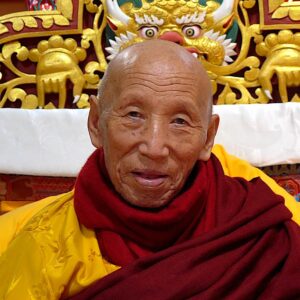“Segmented understanding” or “partial” or “limited” understanding of the Buddha’s teachings can sometimes cause confusion and misunderstanding. To emphasize this point, Phakchok Rinpoche addresses the highly charged and somewhat controversial topic of vegetarianism in Buddhism.
He asks us to consider the difference between various schools of Buddhism and how they interpret the Buddha’s teachings. In the Theravada countries, most monks do not observe a vegetarian diet. Instead, they eat whatever they are offered without complaint. However, in Mahāyāna schools, most practitioners are very strict vegetarians. And in Vajrayāna, there are certain teachings that stress not eating meat, and others that take the opposite view.
So how can we claim there is only one way to interpret the Buddha?
Segmented Understanding Means Seeing Only a Portion
Rinpoche’s main point is that although all the Buddha’s teachings lead toward the same goal, not every Buddhist is the same. Therefore, we should not judge other Buddhists whose approach to Dharma practice and conduct is different from our own. And we need to study extensively, and understand all points of interpretation before we make claims about what is genuine or true. If we understand how the different vehicles emphasize different aspects of the teaching, we can be more open-minded and accommodate different interpretations. We see the whole puzzle, rather than just picking up a piece here and there and trying to describe the whole scene.










Responses